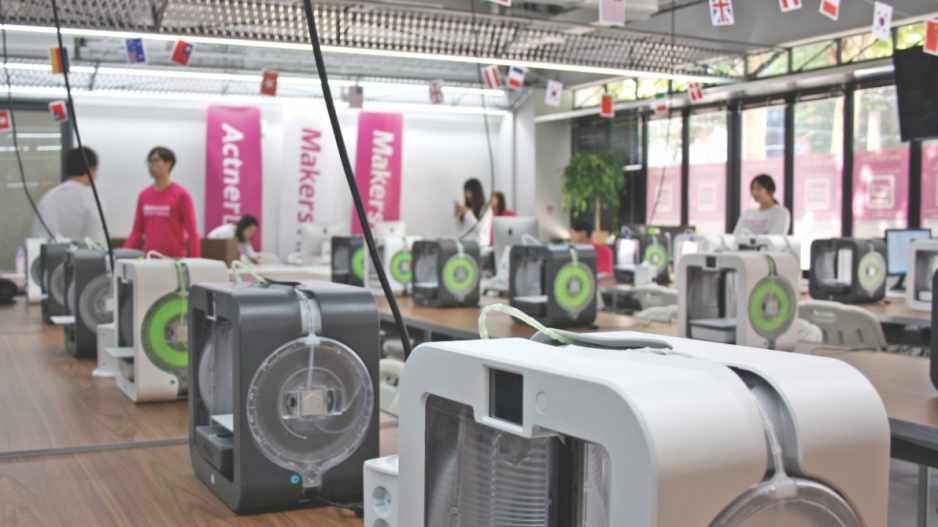While North American startup founders might toast “bottoms up” after securing a big investment from an angel investor, Seoul’s burgeoning startup ecosystem is going for a “top-down” approach.
Unlike North America’s startup model, Seoul’s entrepreneurial tech geniuses aren’t scraping together most of their funding through angel investors or venture capital funds.
Rather, it’s South Korea’s government that’s trying to ignite a tech startup ecosystem in a country still dominated by powerful chaebols (conglomerates) like Samsung (Nasdaq:SSNLF) and LG (Nasdaq:LGEAF).
The country’s first tech accelerator program, Tech Incubator Program for Startups (TIPS), launched in 2013 and has provided 111 startups with funding, mentors and free office space for up to three years.
“Currently, the success rate is 5%, but we are looking to increase the rate to 50%,” Hoonje Cho, general director of the privately owned MakersVill accelerator, told reporters through a translator during Foreign Investment Week in Seoul last month.
That success rate has cost the South Korean government US$50 million in investments over the past two years.
The government judges success by whether a startup is acquired (either by a chaebol or a foreign corporation), completes an initial public offering, generates US$600,000 in revenue annually or receives US$2 million in subsequent venture capital.
“The funny thing about a start
up scene or getting an effective ecosystem together is that no government can mandate it,” said Brent Holliday, founder and CEO of Vancouver-based Garibaldi Capital Advisors.
“You can’t top-down this.”
The TIPS model begins with the government selecting accelerators like Makersvill to fund startups with US$100,000 to US$300,000.
The accelerator evaluates the startup’s technology and the competitiveness of its product to determine if it qualifies for US$500,000 to US$900,000 in additional funding from the government.
It’s up to entrepreneurs to give back 3% of their annual revenue until 40% of the investment has been repaid. If the startup fails, the founders don’t have to repay the investment.
While there’s an abundance of government funding, TIPS is also seeking funds from foreign investors who are permitted no more than a 40% equity stake in the startup.
It’s going to be a tough sell for North American investors, according to Holliday.
Venture capitalists, he said, are typically attracted to tech ecosystems that begin with talent and innovation before the capital follows.
“South Korea is attacking it with the capital first,” Holliday said.
But South Korea’s own challenges with talent and entrepreneurship are why the government’s Small and Medium Business Administration launched TIPS.
“The problem is that highly educated people tend to lack an adventurous spirit,” Cho said, “and they prefer stabilized jobs at leading firms.”
That’s changing rapidly.
In 2013, the government selected five accelerators for the TIPS program. That’s since grown to 18, and six more are expected to launch next year.
Furthermore, the program is making headway convincing people to leave the chaebols to found startups. Thirty-five of the 111 startup CEOs to go through TIPS previously worked for Samsung.
“Because it’s difficult to persuade the [South Korean university] graduates to create a startup, the education concerning this issue must begin with elementary to middle school students to encourage them to make a startup after college,” Cho said.
“In other words, establishment of future companies is closely related to learning startup culture in [the] entrepreneur’s childhood.”




